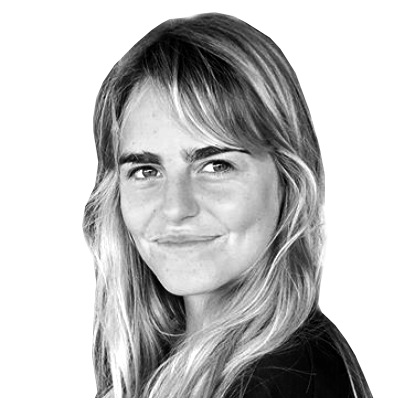Leather is in Maria Sole Ferragamo’s blood. Her grandfather Salvatore Ferragamo started making shoes out of Italian leather in the 1920s and created his eponymous footwear brand in 1927. After he died, in 1960, his wife, Wanda, and their six kids took over. Now, Maria’s dad, Leonardo, is the chairman of the family company.
Instead of joining Ferragamo, Maria, 32, started her own company, So-Le Studio, selling jewelry and accessories she makes out of upcycled scraps of leather.
Next week, Ferragamo is opening her first brick-and-mortar store, in the courtyard of Milan’s new Portrait hotel. This isn’t the first time Ferragamo’s jewelry has gone on display. Over the last four years, she’s exhibited her work—from earrings to bib necklaces—at Art Basel, MiArt (Milan’s art fair), and Salone del Mobile.

Although Ferragamo started So-Le Studio in 2017, she’s been making jewelry since she was eight years old. Growing up in Florence, “I’d bring pearls into school and make things under my desk,” she tells me. “During the winter I’d work on the collection, and during the summer I’d sell the collection on the beach.”
When Ferragamo was 12, she visited one of the family factories, where high-quality leather is pieced together by Tuscan artisans. She was captivated. “From then on, I wanted to spend all my summers there,” she says. “I loved watching them put things together. I couldn’t wait for school to be over so I could spend time there.”

While an intern at the small leather-goods department at the Ferragamo factory, she found herself admiring the geometric patterns in Florence. The intricate technical work of the churches and palazzos enthralled her. “It taught me to appreciate beauty, and to recognize harmony even when it isn’t immediately apparent,” she says.
In 2010, she left home to study architecture in Milan, at the Politecnico di Milano. She chose architecture “so that I could have some structure, some control over my creativity.” But as Ferragamo studied, she realized buildings felt too remote and impersonal. Her mind wandered back to the sewing and factory-hopping of her childhood. “It occurred to me I could put these three magic elements together,” she explains. “My jewels are just tiny buildings made of leather.”
“I’d bring pearls into school and make things under my desk.”
To learn the ins and outs of working with leather, she spent another year as an intern, bouncing between various factories. “Factories are my wonderland. If someone asked me, ‘Where do you feel most at ease?,’ I’d say, ‘With the machines,’” she says. “Sometimes I forget to eat; I forget to go to the bathroom.”
In 2014, Ferragamo enrolled in a master’s program in jewelry design at London’s Central Saint Martins, and made her first proper collection. It was full of large pieces that played with weightlessness and intricate patterns. To make each item, she would first draw a prototype on AutoCAD (a modeling software), then work with artisans to carve the design into flat pieces of leather. Once these cuts were in, the piece would be folded up into a 3D shape.

Her success was quick. In 2016, shortly after starting her practice, Ferragamo was offered a pop-up space in London to show off her accessories. “It was crazy in retrospect,” she says. “But I wanted to see how people would react to what I created.”
Initially, people found her work confusing. “Buyers from shops said, ‘Where do I put it? If I put it with the jewelry, it’s too big.’ People in the art world said, ‘This isn’t artwork, because you sell these in retail stores.’”
Nonetheless, Ferragamo is carving out her niche. “People buy with pure enthusiasm, which is what I’m looking for,” she says. “And most of them end up coming back.”
Elena Clavarino is a Senior Editor for AIR MAIL


